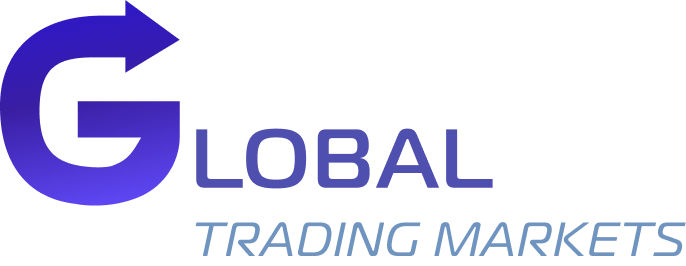IN BRIEF:
• Quantum computing is rapidly becoming a transformative force that could reshape industries, economies, and the foundation of digital trust.
• It has the potential to revolutionize various industries, including pharmaceuticals, finance, logistics, and energy while attracting significant global investment in research and development.
• It also poses significant cybersecurity risks by enabling the rapid decryption of current encryption methods, necessitating the adoption of Post-Quantum Cryptography and cryptographic agility to protect sensitive information against potential threats.
Quantum computing is no longer a futuristic concept. It is rapidly becoming a transformative force that could reshape industries, economies, and the foundation of digital trust. For business leaders, the question is no longer if quantum computing will matter — but when, and how prepared we are.
Unlike traditional computers that process information using a bit, the fundamental unit of digital information represented as either 1 or 0, quantum computers use quantum bits, or qubits, which follow the rules of quantum physics. These qubits exhibit unique behaviors that classical bits cannot. For example, through superposition, a qubit can represent multiple values at once, allowing quantum computers to explore many possible solutions simultaneously. Entanglement links qubits so that changes to one instantly affect the others, enhancing coordination and efficiency. On the other hand, tunneling, another phenomenon in quantum mechanics, allows particles to pass through barriers that would normally block them.
These are just some of the quantum behaviors that give quantum computers the ability to solve certain problems much faster than today’s most advanced machines.
INDUSTRY APPLICATIONS FOR QUANTUM COMPUTING
The potential applications are vast. In pharmaceuticals, quantum computing can accelerate drug discovery by reducing the time and computational resources required for early-stage drug screening, streamlining the drug development pipeline. In finance, it could optimize portfolios and enhance fraud detection systems by analyzing vast datasets for anomalies and patterns much more quickly than classical computers. This capability allows for real-time monitoring, quicker identification of suspicious activities, and the reduction of financial losses.
In logistics, algorithms used in quantum computing could solve complex routing problems, capable of simultaneously considering myriad variables like traffic scenarios. In energy, it could help design better batteries for electric vehicles (EVs) and materials for clean technologies. In particular, quantum computing can simulate chemical reactions in battery materials to develop longer-lasting, faster-charging batteries that boost EV efficiency at a lower cost. Two automobile manufacturers are leveraging it for their EV battery technology, focusing on increasing energy density, reducing charging times, and extending battery life to develop cleaner, more sustainable transportation options. Moreover, by modeling atomic structures and simulating electron behavior, quantum computing can help identify materials that enhance energy conversion rates while reducing costs, making options like solar energy more accessible and affordable.
Governments and corporations are also taking notice. According to Quantum Initiatives Worldwide 2025 by Qureca, over $55.7 billion in public funding has been committed globally to quantum R&D. The Philippines, through the Philippine Council for Industry, Energy and Emerging Technology Research and Development (PCIEERD), has launched its Quantum Technology Roadmap, aiming to become a quantum-enabled economy by 2030.
CYBERSECURITY ISSUES
However, with great promise comes great risk — especially in cybersecurity.
Today’s digital security depends on complex mathematical puzzles that are extremely difficult for conventional computers to solve. These puzzles form the basis of encryption methods used to protect online banking, confidential e-mails, and e-commerce transactions. For example, systems like RSA, a widely used method of asymmetric cryptography that secures digital communications through a public key for encryption and a private key for decryption, and elliptic curve cryptography, a key-based technique for encrypting data, rely on the difficulty of factoring large numbers or solving equations with many variables.
Quantum computers, however, are expected to solve these problems much faster — especially using techniques like Shor’s algorithm, which can break these protections by factoring large numbers efficiently. Even methods like the Advanced Encryption Standard (used to secure data) and Secure Hash Algorithms (used to verify data integrity) could be weakened by Grover’s algorithm, which speeds up the process of searching and cracking encrypted data. These breakthroughs could make it possible to compromise sensitive information that is currently considered secure.
This creates a critical concern: attackers could intercept encrypted data today and wait until quantum computers can decrypt it — a strategy known as “Harvest Now, Decrypt Later” (HNDL).
How then can business leaders address this?
The first step is adopting Post-Quantum Cryptography — new encryption methods designed to resist quantum attacks. In 2024, the US National Institute of Standards and Technology released new standards that define quantum-safe algorithms suitable for today’s systems.
For highly sensitive environments, Quantum Key Distribution offers another layer of protection. It uses quantum physics to securely exchange encryption keys, detecting any interception attempts.
Equally important is cryptographic agility — the ability to quickly update encryption methods as threats evolve. This means understanding what encryption an organization’s systems currently use, designing software that can easily switch to stronger algorithms, and working closely with technology partners to ensure that current systems can adapt without disruption. Financial institutions, in particular, should assess their readiness to make these transitions smoothly and securely.
The transition to quantum-safe systems will take time. But as quantum expert Michele Mosca warns: if the time to migrate (TM) plus the time your data must remain secure (TL) exceeds the time until quantum computers become a threat (TQ), then it is already too late. The TQ timeline is shortening. Advances in qubit fidelity, error correction, and scalable architectures are accelerating the emergence of Cryptographically Relevant Quantum Computers — machines capable of breaking today’s encryption.
REDEFINING POSSIBILITIES
Quantum computing will redefine what is possible. It will unlock new capabilities, drive innovation, and challenge existing paradigms. At the same time, it will also test our resilience and foresight.
For business leaders, the call to action is clear: prepare now, invest wisely, and shape the quantum future with confidence.
This article is for general information only and is not a substitute for professional advice where the facts and circumstances warrant. The views and opinions expressed above are those of the author and do not necessarily represent the views of SGV & Co.
Philip B. Casanova is a technology consulting principal of SGV & Co.

